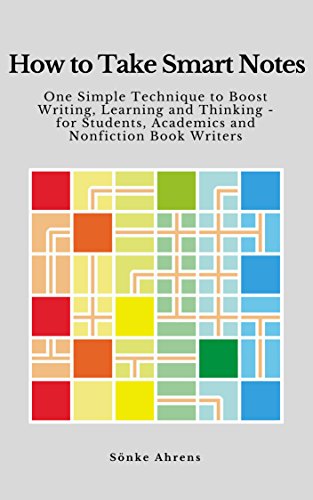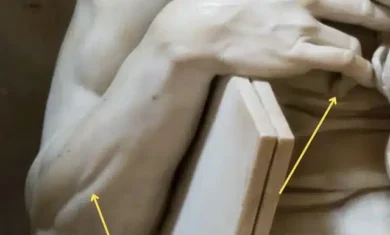I just finished reading How to Take Smart Notes by Sonke Ahrens. It interested me because over the past month or so I’ve really begun to focus better on my note-taking. This applies to books I’ve read, sermons at church, meetings with clients, videos I watch — any situation where I want to gain knowledge, I’m trying to take better notes.

It’s to the point now where I feel I’ve really missed out on previous experiences, as the knowledge I gained from books I read years ago is simply gone. In the book, Ahrens says:
And more often than not, reading is not accompanied by taking notes, which is, in terms of writing, almost as valuable as not having read at all.
Oops.
As I’ve read about various ways to keep notes, the concept of a “Zettelkasten” kept coming up.
Zettelkasten
I first heard about the idea of a Zettelkasten years ago, but it wasn’t until I was introduced to Roam Research last month that I felt inspired to dig back in.
The basic idea of a Zettelkasten is a system where every idea/note is a separate card in a slip-box, and all of those cards are linked to one another. It was popularized by German sociologist Nicklas Luhmann, who had roughly 90,000 cards in his system when he passed away in 1998.
For a quick read that goes a bit deeper into the Zettelkasten, I encourage you to check out this article by David B. Clear.
Roam Research
As I mentioned above, I’ve been using Roam Research pretty heavily for about a month now, as it’s a pretty solid digital tool to create a Zettelkasten. Here is a quick video overview of how I’m using it:
As I mention in the video, this blog post from Nat Eliason is an excellent overview of Roam Research.
How to Take Smart Notes
So onto Sonke’s book. As a general rule, the book walks very deeply through the concepts behind the Zettelkasten while remaining platform agnostic — he talks a lot about physical cards, but also how they could be used in a digital tool. Here are some of my highlights from his book:
When talking about why most note-taking is so bad, he said:
There is another reason that note-taking flies mostly under the radar: We don’t experience any immediate negative feedback if we do it badly.
Part of the beauty of the Zettelkasten is letting notes find one another, rather than determining some pre-set categories or tags. Here’s why:
They sort their notes by topics and sub-topics, which makes it look less complex, but quickly becomes very complicated. Plus, it reduces the likelihood of building and finding surprising connections between the notes themselves, which means a trade-off between its usability and usefulness.
To the extent possible, you shouldn’t fill your notes with copies of what you hear. You should translate what you hear into your own words, and then save that (with a reference back to the original source, when possible).
Here’s a quick video from Dr. Jordan Peterson that explains that further:
In the book, Ahrens breaks the idea of notes into a few types, including “fleeting” notes (quick thoughts on something to do) and “permanent” notes, that should ultimately live in your Zettelkasten. Here’s his key to how to write permanent notes:
Permanent notes, on the other hand, are written in a way that can still be understood even when you have forgotten the context they are taken from.
This next thought of his kind of points back to David Allen’s “Getting Things Done” and only thinking about cat food once.
We also know that we don’t actually have to finish tasks to convince our brains to stop thinking about them. All we have to do is to write them down in a way that convinces us that it will be taken care of. That’s right: The brain doesn’t distinguish between an actual finished task and one that is postponed by taking a note. By writing something down, we literally get it out of our heads.
Another thought on why simply writing down quotes won’t help much:
As well, the mere copying of quotes almost always changes their meaning by stripping them out of context, even though the words aren’t changed. This is a common beginner mistake, which can only lead to a patchwork of ideas, but never a coherent thought.
A few years back, I wanted to learn more about how the GDPR might affect our clients. To force myself to learn, I posted a Meetup about it that I’d have to prepare for, and it worked well. In creating slides and content for the Meetup, I learned quite a lot about the GDPR. It turns out Richard Feynman had a similar theory:
Physicist and Nobel Prize winner Richard Feynman once said that he could only determine whether he understood something if he could give an introductory lecture on it.
In the end, Ahrens summarized the idea like this:
And that is the very good news at the end. The slip-box is as simple as it gets. Read with a pen in your hand, take smart notes and make connections between them. Ideas will come by themselves and your writing will develop from there. There is no need to start from scratch. Keep doing what you would do anyway: Read, think, write. Just take smart notes along the way.
Read the book, or watch this video
I encourage you to read the book for yourself, but Ahrens has given us a nice shortcut. He often speaks about the book, and those talks are a pretty good overview of what’s in there.
Here’s a talk he gave in 2018 that was a solid look at the concept:
For me, I’m pouring as much as I can into Roam to help build up my collection of notes, and I’ll likely revisit old books I’ve read with this new mindset to help fill out that collection.
Do you have a system for taking notes?




Thanks for sharing, Mickey. Very insightful. David Clear’s article provides an excellent overview. You can see Luhmann’s actual cards here: https://niklas-luhmann-archiv.de/bestand/zettelkasten/inhaltsuebersicht and Google translate the German for the ones that have been transcribed to get an idea of what he wrote on the cards.
Hi Mickey. the one advantage Luhmann valued most in using cards in his slip box was the ability to lay the cards out and reorganize them into an outline for writing. No one using Roam seems to mention this. How do you simulate that in the two pane format of Roam?
My only thought was move block references into an outline directly, because I do not think a manual sort can be done in the sidebar. Then you could move them around or remove if they become irrelevant. I understand the value of laying 3×5 cards out on the table shuffling them around. Any solution you have found or best practice?
Thank you.
Lloyd
You’re correct; the accepted best practice for now is to use block references to pull the pieces into your article. Nat Eliason has a great video about it here: https://www.youtube.com/watch?v=RvWic15iXjk
Thanks Mickey will check it out. I enjoyed his course. Best to you.
Thanks Mickey, You were able to teach me about Roam and get me unblocked. I have to go back to Nat’s course again and absorb more. One thing has been bothering me for days. Sonke’s great book (very well written) talks about taking notes by hand which I agree with. If you take notes by hand, have you found an efficient way to get them into Roam? I’m using ReadWise which is great but not handwritten. Any ideas? Thanks for all you contribute.
I move things in manually. When possible, I try to distill notes down before putting them in Roam. A good example might be with my Bible/sermon notes, which I explain here: https://www.youtube.com/watch?v=nplokaE6FKY
Thanks for the great article and short summary over this topic. Personal knowledge management is getting more and more important and knowing how to manage that while taking smart notes or using the Zettelkasten method can be very helpful in the long run. I also suggest you read the full book of Ahrens but i can also recommend looking into our blog post about smart notes. https://zenkit.com/en/blog/smart-note-taking-for-research-paper-writing/